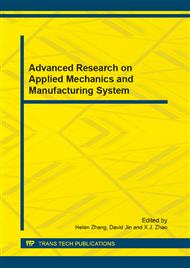p.228
p.232
p.237
p.241
p.245
p.250
p.255
p.259
p.263
Study on the Corrosion Resistance of ZrN Films on the Aluminium Alloys Surface
Abstract:
Aluminum alloy have the active chemical properties,low standard electrode potential, and the surface will be easily forming about 1-3nm oxide film in dry air, therefore aluminum alloy have the poor corrosion resistance.ZrN film deposited by mid frequency reactive magnetron sputtering process on aluminium alloy surface in order to improve the corrosion performance. Study the influences of nitrogen flow rate, sputtering time and temperature to the corrosion performance. The results show that: The corrosion performance of ZrN films will be improved with the nitrogen flow rate increase,but when the nitrogen flow rate was more than 18sccm, ZrN film corrosion resistance will be reduce;The corrosion performance improved with the sputtering time increase,when the time reach 15min, ZrN film corrosion resistance was no longer increase;The corrosion performance improved with the temperature, when the temperature reach 130°C, the corrosion resistance was no longer increase.The best process parameters was: nitrogen flow rate 18sccm, sputtering time 15min, temperature 130°C.
Info:
Periodical:
Pages:
245-249
Citation:
Online since:
December 2012
Authors:
Price:
Сopyright:
© 2013 Trans Tech Publications Ltd. All Rights Reserved
Share:
Citation:


